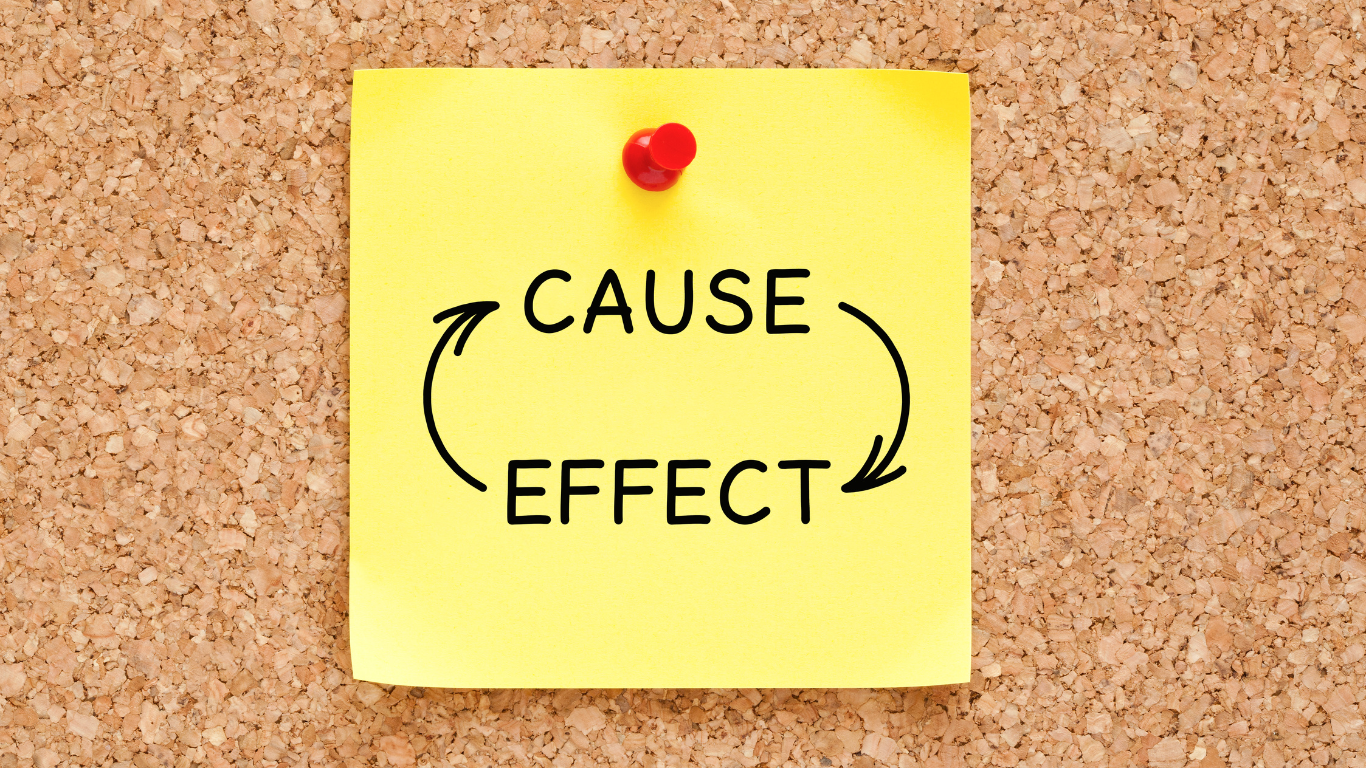
“In 2015 I will do the new year resolutions I set out to do in 2014. The same resolutions I promised to do in 2013, which I had planned to do in 2012, which I originally wrote out in 2011.” Did you sound something like that back at the start of the New Year?"
Hi, and a very belated Happy New Year! I hope it’s off to a positive and eventful start for you.
Since this is the first edition of Karen Inside Out for 2015, it only seems fitting to talk about New Year’s resolutions—remember the ones we all set just last month?
“I’ll stick to the resolutions I made for 2014… which I originally intended to follow in 2013… that were planned in 2012… and first written down in 2011.”
Does that sound familiar? Did you manage to stick to those promises? Or even start them?
I recently came across a funny post on social media: “If procrastination were an Olympic sport, I’d compete in it… later!” It made me think—what are we really planning to do in 2015? What will we promise ourselves, over and over, only to let slip as the days pass by?
Often, the root cause is low frustration tolerance. We convince ourselves that something is too hard, when in reality, it’s not as daunting as it seems. We set big, ambitious goals and then lose faith the moment we hit a setback. And we forget to break those goals down into smaller, manageable steps.
So, let’s start 2015 with a challenge I present to all of you…
- Focus on What You Do Want, Not What You Don’t Want
It’s essential to articulate your goals positively. Rather than stating what you don’t want, focus on what you do want. Often, the discomfort of our current situation motivates us to change, but fixating on negatives can hinder progress.
For example, when you focus on not losing your temper, you inadvertently emphasize anger instead of calmness. If your goal is “I don’t want to be overweight,” your thoughts may center on being overweight rather than envisioning a healthier, happier you. Similarly, if you say, “I don’t want to smoke,” you might only amplify your cravings for cigarettes.
Instead, rephrase your objectives positively. Aim for statements like “I want to be calm in challenging situations,” “I want to achieve a healthier weight,” or “I want to enjoy better health and self-esteem as a non-smoker.” This shift in focus encourages a more productive mindset and supports achieving your goals.
- Have a way of knowing when you have achieved it.
This is the ‘evidence’ step. You must have a clear picture of yourself having achieved your objective. This mental image provides your brain, particularly the Reticular Activating System, with a target to focus on.
The brain aims to turn your dreams into reality—hence Ralph Waldo Emerson’s advice: “Be careful what you set your heart on, for it will surely be yours.” If you focus on thoughts of being healthy, your life is likely to reflect that. Conversely, dwelling on thoughts of becoming unhealthy can lead you in that direction.
For example:
- If you concentrate on anger and anger-evoking situations, you are more likely to remain angry.
- If you think about foods you shouldn’t eat, you’ll crave them more.
- If you spend time trying not to think about cigarettes, you’ll only intensify your cravings.
Since it’s impossible to not think about something, you need to have replacement thoughts ready—thoughts about how you want to be. Without these, achieving your goal becomes challenging; it’s akin to walking into your future while looking backward!
For the examples provided, visualize yourself as if watching a snapshot or video of yourself, ensuring it’s dissociated—meaning you can see your face in the picture. Imagine:
- Replacing old, angry responses with a calmer, more humorous, and reasonable attitude.
- Enjoying a healthier and more enjoyable weight or size.
- Relishing the many benefits of being someone who used to smoke.
- Know When and Where You Want It—and Where You Don’t
It’s helpful to specify both where you want to achieve your desired outcome and where you don’t. For instance, if your goal is to feel calmer, identify the specific situations where you want to experience this calmness. If you want to be calm in all situations, simply state that.
The same principle applies to goals like feeling lighter, slimmer, free of cigarettes, or enjoying better health.
However, consider your goal of becoming more assertive. You might want to be more assertive in certain situations but not others. Similarly, if you aim to be more relaxed, determine if you want this at home or work, but consider if you would also want it on the football field or at a lively party.
- Ensure It Is Something You Can Achieve!
Many dreams remain just that—dreams—because they depend on others changing their behavior. For example, statements like “I want to be loved,” “I want a better relationship,” or “I want to be popular” are flawed. Each of these relies on other people to change, and this is not a goal; it’s merely a wish or a dream. You cannot force others to feel or behave in a certain way, despite what some may believe when they get angry.
You can influence, negotiate, plead, or even bribe, but ultimately, people have the final say. To be ‘well-formed,’ an outcome needs to fall within your realm of influence.
- You cannot make someone love you; a relationship requires input from all participants.
- Your popularity is not something you can directly influence, as it depends on the tastes of those you wish to impress.
To become calmer, you must rely on your own efforts. This means maintaining your calm in situations that once irritated you, regardless of how others behave. Similarly:
- Your goal to become slimmer and lighter should include managing your eating habits, even if those around you indulge in unhealthy foods.
- Your smoke-free future must enable you to feel comfortable, even if others are smoking.
The second part of this step is crucial: you need to clearly outline what actions you will take to bring your goal to reality. Detail your plan of action to make your aspirations achievable.
- Both the Advantages and the Disadvantages
When considering a lifestyle change, it’s essential to identify both the advantages and disadvantages. Many of us imagine that achieving our goals will lead to a perfect life, but this perspective can be unrealistic. No single change can make life ideal. Failing to realistically evaluate both the upsides and downsides of pursuing a particular objective may hinder our success or diminish our enjoyment of the benefits once we achieve it.
Detailing the advantages of your desired outcome can be a highly motivational exercise. However, it is equally important to acknowledge the drawbacks. For example:
- Aiming to be calmer in previously irritating situations might mean sacrificing the satisfaction of intimidating others and allowing them to “get away with” behaviors that don’t meet your standards.
- Achieving a healthier weight often requires eating less, giving up favorite foods, and exercising at inconvenient times—all significant sacrifices.
- Becoming healthier and quitting smoking will involve physical cravings and discomfort for a week or two, along with lingering psychological cravings that may persist in decreasing intensity.
By detailing both the advantages and disadvantages upfront, you can approach your goal realistically. This awareness prepares you for what to expect and increases the likelihood that you will stick with your plan and truly enjoy the benefits of your success.
- Make it Worthwhile
Your objective should align with your personal values. Understand “what’s in it for me?” Consider your values as the feelings you’ll experience upon achieving your goal and, importantly, the unpleasant feelings you’ll avoid as a result.
Action Step:
List these values and feelings in detail. Aim for at least four or five of each: the positive feelings you wish to experience and the negative feelings you want to avoid.
Isn’t this a lot of bother?
Some may find this process cumbersome, and yes, it requires thoughtful consideration to create a clear, achievable outcome. Spending an hour or more on this is worthwhile; if your goal doesn’t deserve this level of thought, is it worth pursuing at all?
Taking this approach may take longer upfront, but it simplifies the achievement process. Instead of being “in two minds,” you’ll focus your mind and energy, helping you marshal your resources and motivation to reach your goal.
- The Payoff
Having a clear and carefully defined outcome significantly increases the likelihood of achieving your goal. By defining your outcome, you transform it from a dream into a tangible target.
In our LSM Coach training workshops, students often comment that this process helps them see their goals more clearly, feel more focused, perceive their objectives as more realistic, and boost their motivation to pursue them.
Most importantly, enjoy what you set out to do. This enjoyment enhances your chances of success, allowing you to proudly say, “I did it.”
Catch up soon, and thanks!
Les Symons
Les Symons is one of Africa’s most sought-after personal development coaches. His passion for empowering individuals to take control of their lives has transformed countless lives worldwide, earning him an excellent reputation for sincere, highly valued, and respected guidance. His company, LSM Coach, provides corporate communications training and is a subsidiary of LSM Africa—a consultancy firm dedicated to helping professionals plan for their families’ futures.
Lifestyle Management Limited
Office D6 (2nd floor), Riara Centre, Riara Road, P.O. Box 777-00606, Nairobi, Kenya.
Telephone:
+254 (4) 777777333









